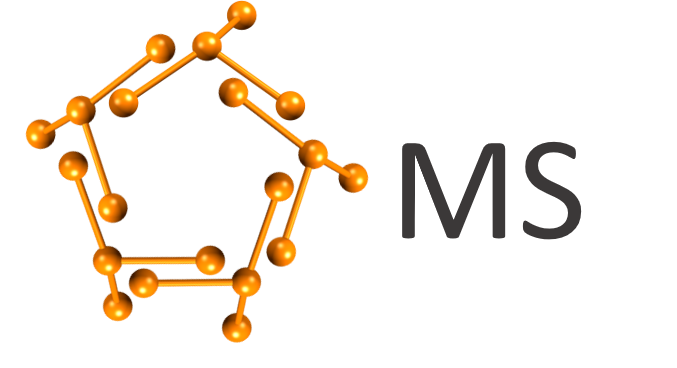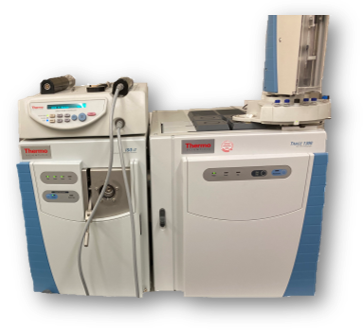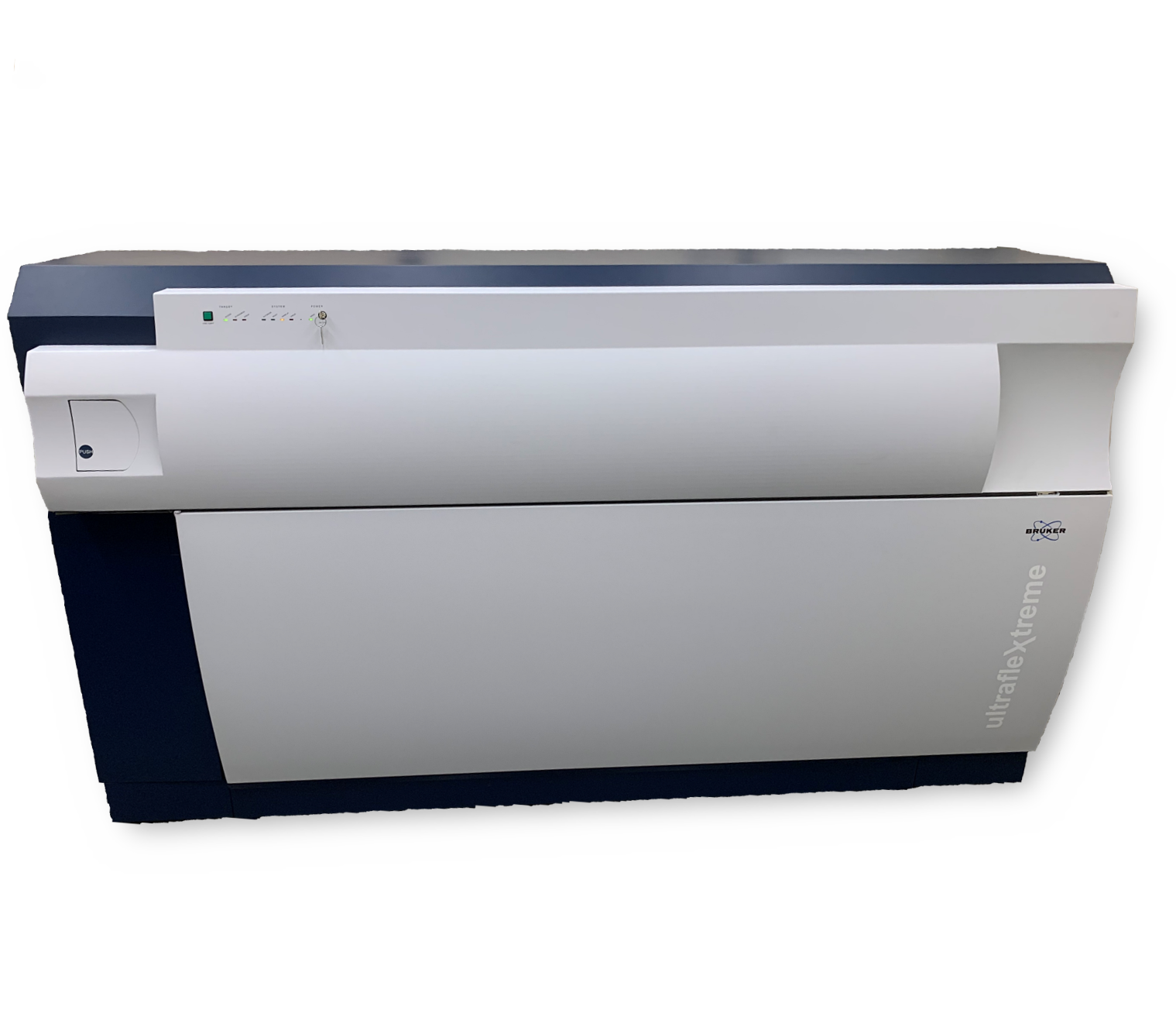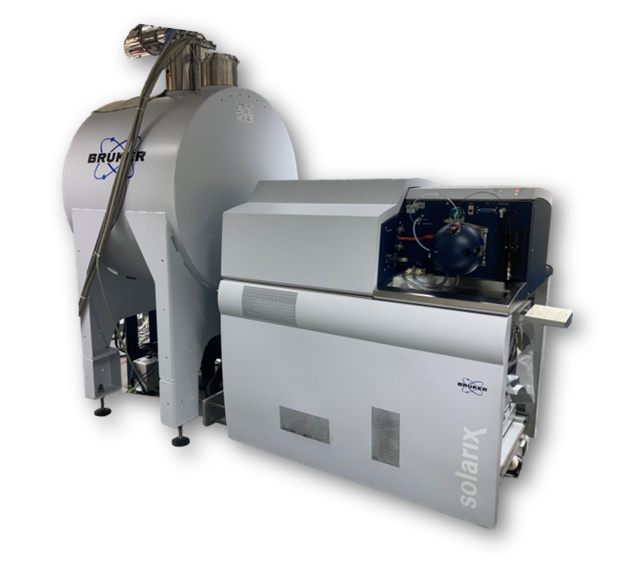
Die Core Facility EMMA bietet allen Arbeitsgruppen innerhalb der Universität Ulm sowie externen Firmen und akademischen Institutionen als Serviceleistung die Analytik von Proben mit Hilfe verschiedener massenspektrometrischer Methoden.
Bei allen geplanten Studien, bei denen die Massenspektrometrie unterstützend mit einspringen soll, nehmen Sie bitte vorher mit uns Kontakt auf, um das geplante Projekt zu besprechen und eventuelle Probleme frühzeitig zu erkennen. Bitte bringen Sie, wenn Sie die Proben vorbeibringen, auch das ausgefüllte Formular für die MS-Messungen mit.
Die Core Facility hat ihren Schwerpunkt in der Analyse von heteroaromatischen Oligomeren und Polymeren. Zum Angebotsspektrum gehören auch Analysen von Peptiden, Proteinen, Oligosacchariden, Oligonucleotiden und Metallkomplexen. Je nach Aufgabenstellung werden unterschiedliche Instrumente eingesetzt. Die Auswahl der Spektrometer und Methoden erfolgt nach Verfügbarkeit und analytischer Fragestellung. Die Serviceabteilung berät die Nutzer im Vorfeld und im Laufe des Projekts bezüglich experimenteller Strategien, anwendbarer Methoden, Probenvorbereitung und Interpretation der Ergebnisse. Die Unterstützung umfasst auch die bioinformatische Auswertung von Daten.
Ausstatung
Gaschromatographie - Massenspektrometrie
GC-MS

Thermo Scientific ISQ LT (N26/129)
Ionisierungmethoden
- Elektronenstoßionisation
- Cemische Ionization - (+) und (-)
Massenbereich
- 50 - 1000 u
Probleneinlass und Kopplung
- GC-MS (Thermo Scientific Trace 1300)
- Feststoffeinlass (DIP) bis 350 °C
- "Direct-Exposure"(DEP)-Einlass bis ca. 1000 °C (Flash-Verdampfung)
Vorbereitung
GC
- Proben eingewogen (1-2 mg) oder in einem flüchtigen Lösungsmittel (DCM, Hexan, Pentan, Essigsäureethylester, Aceton, Diethylester, Methanol etc) gelöst (Konzentrationsangabe nötig) in einem GC-Probengläschen abgeben.
Feststoffeinlass
- Proben eingewogen (1-2 mg) in einem GC-Probengläschen oder Eppendorff Microtube (0.5 oder 1.5 ml) abgeben.
Abgabe
Bitte geben sie das ausgefüllte Formular für die MS-Messungen (siehe unten) zusammen mit der Probe ab. Der Probenschrank für die Abgabe befindet vor dem MS-Labor in N26/130.
- Feststoffeinlass für unpolare flüchtige Proben, z.B. gesättigte sowie ungesättigte aliphatische und aromatische Kohlenwasserstoffe und ihre Derivate wie Halogenide, Ether, Säuren, Ester, Amine, Amide, Heterocyclen, Flavone, Steroide, Terpene und vergleichbare Verbindungen.
- Die GC-EI-MS wird für die Direktanalyse von Gemischen eingesetzt, z.B. bei der Analyse von Synthese-Nebenprodukten.
MS-MS Spektrometer
MALDI-TOF/TOF Massenspektrometer

Bruker ultrafleXtreme (N26/130)
Ionization Method
Matrix Assisted Laser Desorption Ionization - MALDI
Mass Range
100 – 600000 u (linear)
100 – 80000 u (reflector)
Mass Accuracy
< 5 ppm
MS/MS
Collision Induced Dissociation - CID
Preparation
**The sample preparation up to the actual mass spectrometric analysis is carried out by the user (possibly after agreeing on suitable sample preparation protocols).**
- Samples should be weighed (1-2 mg) into a GC sample vial or Eppendorff Microtube (0.5 or 1.5 ml). If necessary, the samples can also be dissolved in a volatile solvent (DCM, hexane, pentane, ethyl acetate, acetone, diethyl ester, methanol, etc.) (concentration required).
Submission
Please submit the completed form for MS measurements (see below) together with the sample. The sample cabinet for delivery is located in front of the MS laboratory in N26/130.
- Non High-Res Mass Determinations
- Characterization of Isolated Fractions
- Polymers
- Non-Polar Molecules
- MALDI Imaging
- MS/MS Measurements
FT-Ionzyklotronresonanz Spectrometrie
FT-ICR Massenspectrometer

Bruker solariX (N26/104)
Magnetfeldstärke
- 7 Tesla
Ionisierungsmethoden
- Elektrospray
- APCI
- MALDI
Massenbereich
- 100 bis 10000 u (MALDI)
- 100 bis 6000 u (ESI, APCI)
Vorbereitung
**Die Probenvorbereitung bis hin zur eigentlichen massenspektrometrischen Analyse erfolgt durch die Anwender (ggf. nach Vereinbarung geeigneter Probenvorbereitungsprotokolle).**
- Proben vorzugsweise eingewogen (1-2 mg) in einem GC-Probengläschen oder Eppendorff Microtube (0.5 oder 1.5 ml) abgeben. Zur Not können die Proben auch in einem flüchtigen Lösungsmittel (DCM, Hexan, Pentan, Essigsäureethylester, Aceton, Diethylester, Methanol etc) gelöst (Konzentrationsangabe nötig) vorliegen.
Abgabe
Bitte geben sie das ausgefüllte Formular für die MS-Messungen (siehe unten) zusammen mit der Probe ab. Der Probenschrank für die Abgabe befindet vor dem MS-Labor in N26/130.
- Bestimmung der exakten Masse und Identitätskontrolle von organischen Polymeren und Makrozyklen, Metallkomplexen, Peptiden, Glykanen und Oligonukleotiden
- Identifizierung von Proteinen aus 1D- und 2D-Gelbanden
- Lokalisation posttranslationaler Modifizierungen durch "Peptide Mapping"
